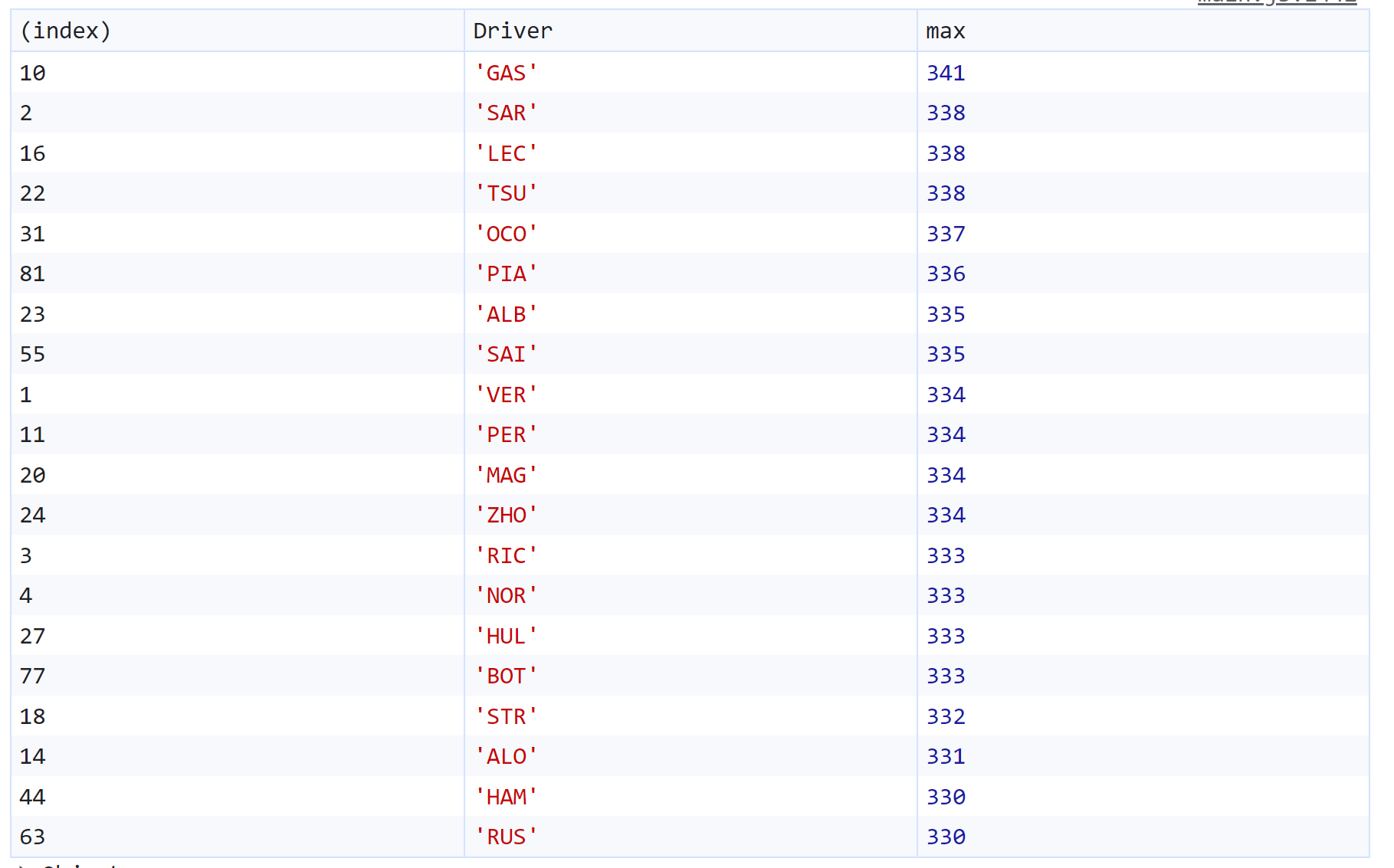
- Login or Register
No account yet? Sign up

Piastris long run was 4 laps?organic wrote: ↑03 Nov 2023, 18:12Fuel loads obv different across board
https://i.imgur.com/0Y6z9rV.jpeg
From the same guy, but testing on a sprint weekend is very hard to get a read on.organic wrote: ↑03 Nov 2023, 18:12Fuel loads obv different across board
https://i.imgur.com/0Y6z9rV.jpeg


this chart looks like one of those deep sea videos showing mysterious squids and stingraysmwillems wrote: ↑03 Nov 2023, 18:45From the same guy, but testing on a sprint weekend is very hard to get a read on.organic wrote: ↑03 Nov 2023, 18:12Fuel loads obv different across board
https://i.imgur.com/0Y6z9rV.jpeg
https://pbs.twimg.com/media/F-BYmCDXYAA ... name=large
https://pbs.twimg.com/media/F-BYPLEXQAA ... name=large
Some teams don't, Mercedes in the last sprint race didn't do a heavy fuel long run test, or so they say, and that was the reason they didn't identify that the ride height was too low.
I wouldn’t say they need to do a run just do a few laps with full tanks?mwillems wrote: ↑03 Nov 2023, 19:00Just wondering, do you need to do a long run to test plank wear? There are sensors on the suspension and wheels, they know how much the car is travelling up and down, and when it is being stopped by road and not by the suspension itself, and wouldn't they be aware of how much travel is left in the suspension? This would be enough to understand if the suspension is set to a ride height that will result in excess wear. Plus the physical test and eye test on the plank after the runs.
I don't know if this is the case, but it feels like it is something the teams would monitor.
yes but as was pointed out above, during a Sprint week teams may not do a full long run in FP1 and you dont get full plank loads with simulations and sensors (as it happened in Qatar)mwillems wrote: ↑03 Nov 2023, 19:00Just wondering, do you need to do a long run to test plank wear? There are sensors on the suspension and wheels, they know how much the car is travelling up and down, and when it is being stopped by road and not by the suspension itself, and wouldn't they be aware of how much travel is left in the suspension? This would be enough to understand if the suspension is set to a ride height that will result in excess wear. Plus the physical test and eye test on the plank after the runs.
I don't know if this is the case, but it feels like it is something the teams would monitor.
It almost seems as if teams use the sprint for long runs data instead, didn’t notice any significant long runs.
Yeah, I was replying to your surprise that they weren't doing long runs, and I was having a shot as to why they wouldn't need to. I don't think it is necessary to do long runs to get a reasonable gauge of what your setup needs to be at this track, long runs are more about tyres. Austin is different however.Macklaren wrote: ↑03 Nov 2023, 19:25yes but as was pointed out above, during a Sprint week teams may not do a full long run in FP1 and you dont get full plank loads with simulations and sensors (as it happened in Qatar)mwillems wrote: ↑03 Nov 2023, 19:00Just wondering, do you need to do a long run to test plank wear? There are sensors on the suspension and wheels, they know how much the car is travelling up and down, and when it is being stopped by road and not by the suspension itself, and wouldn't they be aware of how much travel is left in the suspension? This would be enough to understand if the suspension is set to a ride height that will result in excess wear. Plus the physical test and eye test on the plank after the runs.
I don't know if this is the case, but it feels like it is something the teams would monitor.
Yeah he was on used. Let's see how the track rubbers in. And if there is rain, it could threaten Oscar if he doesn't get another lap in before.